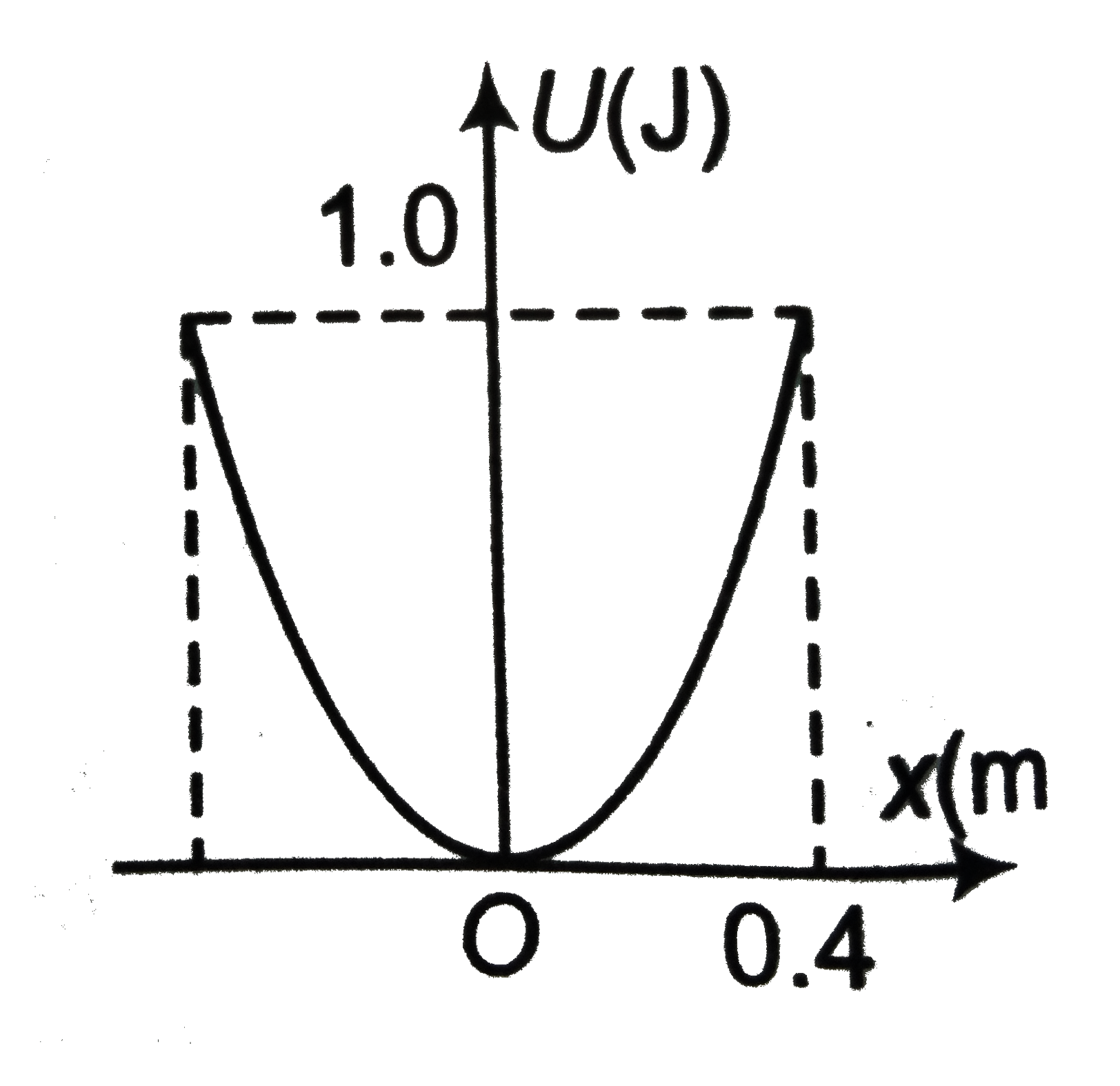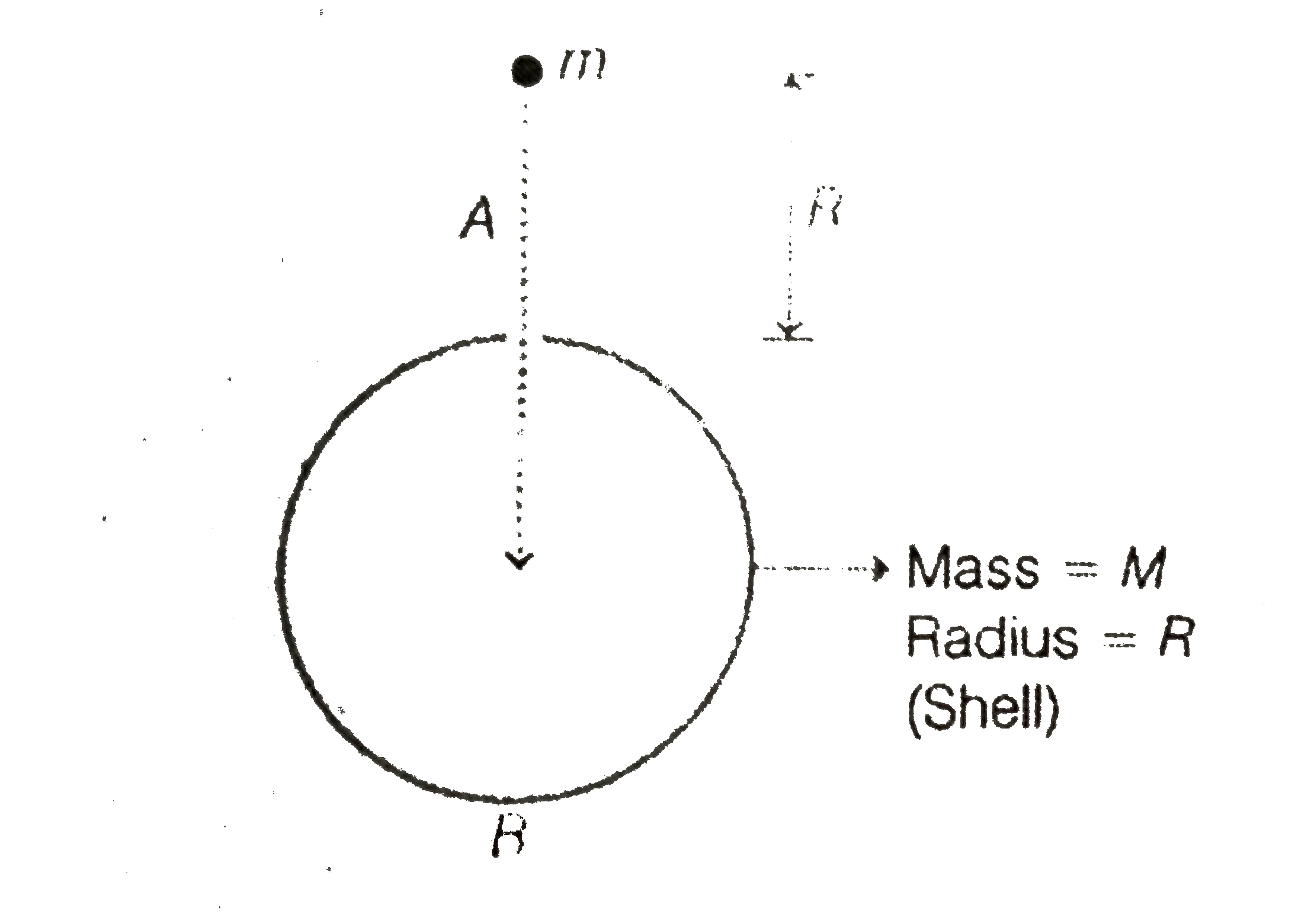A small particle of mass m, moves in such a way that the potential energy U=ar3, where a is position constant and r is the distance of the particle from the origin. Assuming Rutherford's model of circular orbits, then relation between K.E and P.E of the particle is :
K.E=32U
K.E=U
K.E=3U
K.E=U2
The correct Answer is:A
To solve the problem, we need to establish the relationship between the kinetic energy (K.E) and potential energy (P.E) of a particle moving in a potential field defined by U=ar3.
1. Identify the Potential Energy:
The potential energy U of the particle is given by:
U=ar3
where a is a constant and r is the distance from the origin.
2. Calculate the Force:
The force F acting on the particle can be derived from the potential energy using the relation:
F=−dUdr
Therefore, we differentiate U:
F=−ddr(ar3)=−3ar2
3. Relate Force to Centripetal Force:
According to Rutherford's model, the force acting on the particle provides the necessary centripetal force for circular motion. Thus, we can equate the magnitude of the force to the centripetal force:
F=mv2r
Setting the two expressions for force equal gives:
−3ar2=mv2r
4. Solve for Kinetic Energy:
Rearranging the equation to solve for mv2:
mv2=−3ar3
The kinetic energy K.E is given by:
K.E=12mv2
Substituting for mv2:
K.E=12(−3ar3)=−32ar3
5. Relate K.E to P.E:
We know from the potential energy expression that:
U=ar3
Therefore, we can express the kinetic energy in terms of potential energy:
K.E=−32U
However, since we are looking for a positive relationship, we can rewrite it as:
K.E=32(−U)
Thus, the relationship between kinetic energy and potential energy is:
K.E=32U
Final Result:
The relation between the kinetic energy and potential energy of the particle is:
K.E=32U
The potential energy U of the particle is given by:
U=ar3
where a is a constant and r is the distance from the origin.
The force F acting on the particle can be derived from the potential energy using the relation:
F=−dUdr
Therefore, we differentiate U:
F=−ddr(ar3)=−3ar2
According to Rutherford's model, the force acting on the particle provides the necessary centripetal force for circular motion. Thus, we can equate the magnitude of the force to the centripetal force:
F=mv2r
Setting the two expressions for force equal gives:
−3ar2=mv2r
Rearranging the equation to solve for mv2:
mv2=−3ar3
The kinetic energy K.E is given by:
K.E=12mv2
Substituting for mv2:
K.E=12(−3ar3)=−32ar3
We know from the potential energy expression that:
U=ar3
Therefore, we can express the kinetic energy in terms of potential energy:
K.E=−32U
However, since we are looking for a positive relationship, we can rewrite it as:
K.E=32(−U)
Thus, the relationship between kinetic energy and potential energy is:
K.E=32U
The relation between the kinetic energy and potential energy of the particle is:
K.E=32U
Topper's Solved these Questions
- BOOK - RESONANCE ENGLISHCHAPTER - DAILY PRACTICE PROBLEMEXERCISE - DPP No.249videos
DAILY PRACTICE PROBLEM
- BOOK - RESONANCE ENGLISHCHAPTER - DAILY PRACTICE PROBLEMEXERCISE - DPP No.2520videos
DAILY PRACTICE PROBLEM
- BOOK - RESONANCE ENGLISHCHAPTER - DAILY PRACTICE PROBLEMEXERCISE - DPP No.229videos
DAILY PRACTICE PROBLEM
- BOOK - RESONANCE ENGLISHCHAPTER - CURRENT ELECTRICITYEXERCISE - High Level Problems (HIP)19videos
CURRENT ELECTRICITY
- BOOK - RESONANCE ENGLISHCHAPTER - ELECTRO MAGNETIC WAVESEXERCISE - Exercise 327videos
ELECTRO MAGNETIC WAVES
Similar Questions
A small particle of mass m moves in such a way that the
potential energy U=ar2, where a is constant and r is the distance of the
particle from the origin. Assuming Bhor model of quantization of angular
momentum and circular orbits, find the rodius of nth allowed orbit.View SolutionA small particle of mass m move in such a way the potential energy U=12m2ω2r2 when a is a constant and r is the distance of the particle from the origin Assuming Bohr's model of quantization of angular momentum and circular orbits , show that radius of the nth allowed orbit is proportional to in
View SolutionA small particle of mass m move in such a way the potential energy (U=12m2ω2r2) when a is a constant and r is the distance of the particle from the origin Assuming Bohr's model of quantization of angular momentum and circular orbits , show that radius of the nth allowed orbit is proportional to in
View SolutionA small piece of mass m moves in such a way the P.E. =−12mkr2. Where k is a constant and r is the distance of the particle from origin. Assuming Bohr's model of quantization of angular momentum and circular orbit, r is directly proportional to :
(a)n2
(b)n
(c)√n
(d)none of theseView SolutionA particle of mass 2kg moves in simple harmonic motion and its potential energy U varies with position x as shown. The period of oscillation of the particle is
 View Solution
View SolutionA particle of mass 2kg moves in simple harmonic motion and its potential energy U varies with position x as shown. The period of oscillation of the particle is
 View Solution
View SolutionA particle of mass m moves in the potential energy U shoen above. The period of the motion when the particle has total energy E is
View SolutionThe potential energy of a particle in a force field is:
U=Ar2−Br,. Where A and B are positive
constants and r is the distance of particle from the centre of the field. For stable equilibrium the distance of the particle isView SolutionThe potential energy of a particle in a conservative field is U =a/r^3-b/r^2, where a and b are positive constants and r is the distance of particle from the centre of field. For equilibrium, the value of r is
View SolutionA particle of mass m is moved from A to B as show in figure. Then potential energy of the the particle
 View Solution
View Solution

